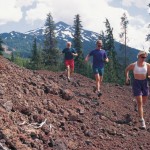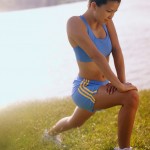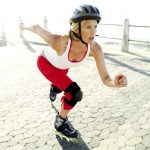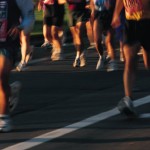 There really is no excuse to miss a workout, thanks to FitBlok. The new app is created by those in the fitness business who not only understand first-hand the challenges of keeping up with workouts while traveling or away from your usual exercise routine, but also understand the importance of a properly executed exercise session. The FitBlok professionals will guide you through a workout offering tips on form, technique and everything else you need to complete an effective workout…from absolutely anywhere!
There really is no excuse to miss a workout, thanks to FitBlok. The new app is created by those in the fitness business who not only understand first-hand the challenges of keeping up with workouts while traveling or away from your usual exercise routine, but also understand the importance of a properly executed exercise session. The FitBlok professionals will guide you through a workout offering tips on form, technique and everything else you need to complete an effective workout…from absolutely anywhere!
Getting fit really is as easy as 1-2-3:
1. Go to their website, www.fitblok.com or download their FREE App from the itunes store.
2. Choose your workout.
3. Feel better and look better with an efficient and effective professional-guided exercise session.
Getting started is easy! Begin browsing available exercise sessions immediately. If you like what you see, sign up and create a profile either through Facebook or via your ipad app. You can even invite friends to join you in the workout.
What makes FitBlok different? “Most online workout programs offer a specific trainer, or small handful of trainers from a particular exercise discipline” explains Brett Klika, featured Fitblok Trainer. “With Fitblok, the user can choose from a variety of credible, professional personal trainers from a variety of disciplines including Pilates, yoga, sports performance, dance, kettlebell training, TRX, and much more” Brett adds.
FitBlok also serves as an economical option to keep up with exercise when your usual routine is challenged, as you only pay for the classes in which you participate. “There are no monthly fees” Brett states, and continues “users only pay for ‘classes’ they attend.” At $1.00- $4.00 per class, that’s far less than a day-use pass at a gym, and you’ll save time on the commute to and from the gym, avoid the crowds, and even having to pack a gym bag. What’s more convenient than that? User Mark McGovern has enjoyed FitBlok and says, “it is a great ‘fallback’ if traveling and in a hotel room, or pressed for time in the early morning.”
Check out Brett’s three most popular workouts. There really is something for every interest and every fitness level.
Body Weight Training (The Naked Workout)
Injury Prevention and Recovery (No Pain, Big Gains)
Sports Training (Weekend Warrior)
While the workouts on FitBlok come in a variety of intensities, you can try a FREE 30 minute high intensity sports-based workout by clicking here.
So whether you prefer to work out in the privacy of your own home or you travel often, and would like the accountability, motivation and instruction of a Fitness Professional, this app should be #1 on your list. Brett explains “I travel quite a bit as a professional speaker and fitness consultant. I became involved with the Fitblok platform because I’ve seen a vast global need for access to professional exercise guidance.” Brett continues, “the every-day world doesn’t require much physical activity, so people have to create it. Many don’t know how. Now they have an affordable, accessible resource to help improve their fitness and health.”
Let’s face it, who isn’t busy these days, children, long work hours, we’re all pulled in so many directions- slow down the pace, take care of your health and exhale with FitBlok; your on-the-go fitness solution.
 Subscribe
Subscribe







